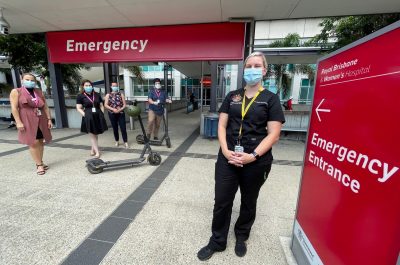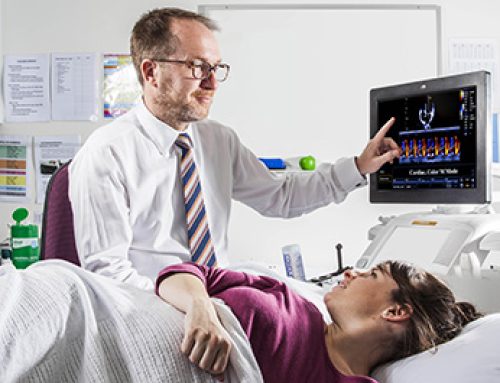Targeting e-Scooter offenders could reverse hospital trends

A police campaign targeting e-Scooter offenders being launched this week could help set new trends in both hospital emergency department presentations and e-mobility uptake, according to researchers.
Professor Kirsten Vallmuur from the Australian Centre for Health Services Innovation (AusHSI) within the QUT Faculty of Health is Chair of Trauma Surveillance and Data Analytics with the Metro North Health Jamieson Trauma Institute (JTI) e-Scooter Project team.
She said of electric Personal Mobility Devices (ePMDs), e-scooters accounted for about 92 per cent of incidents presenting to emergency departments.
“Upper limb fractures and head injuries are most common with almost one-in-five, or 18 per cent, of cases requiring hospital admission,” Professor Vallmuur said.
“Emergency department presentations spike on Thursday and Saturday nights between 6 pm – 12 pm and Sunday mornings from 12 am – 6 am.
“People aged under 35 years account for almost 70 per cent of all emergency department presentations.”
The Queensland Police Service announced that, from today, it would crack-down on e-scooter riders ahead of the introduction of safety measures including reduced speed limits to take effect from 1 November.
Professor Vallmuur said safety concerns were prompted by increased emergency department presentations related to ePMD devices such as e-scooters, e-bicycles, e-skateboards, Segways and One Wheels.
She said improved safety measures could further support ePMD as alternative transport that reduced road congestion and pollution, grow jobs and contribute to other economic outcomes.
“As these are new forms of mobility, research is only starting to emerge about the efficacy of helmets and reduced speeds but, just as for other areas of road trauma, the research is showing these strategies do reduce the likelihood of significant injuries occurring,” Professor Vallmuur said.
In partnership with QUT, the JTI was established by the Motor Accident Insurance Commission and Metro North Hospital and Health Service with the aim of advancing trauma prevention, research, systems, and clinical management to deliver best care.
It established a novel surveillance approach to provide information for regulators to help keep people safe from ePMD injuries.
Researchers collect data on emergency department presentations to Royal Brisbane and Women’s Hospital, Princess Alexandra Hospital, and Mater Hospital, to understand trends and patterns of injuries and crash circumstances.
The JTI helped inform Brisbane’s e-mobility strategy by the Brisbane City Council, and the Queensland Government Personal Mobility Device Safety Action Plan.
As part of the action plan, JTI was invited to join the Personal Mobility Device Safety Reference Group led by the Queensland Government Department of Transport and Main Roads with a range of key stakeholders to consider strategies addressing infrastructure, enforcement and regulation, behaviour, product safety, and public awareness.
“It is critical we continue to have up-to-date injury surveillance to monitor the injury patterns and identify opportunities for safety interventions with these emerging forms of transport,” Professor Vallmuur said.
“These data directly inform trauma management, safety regulation and enforcement and ultimately reduce serious injuries and deaths in our community.”
Media contacts
Sian Conway Lamb, 07 3138 6087, sian.conwaylamb@qut.edu.au
Novella Moncrieff, 07 3138 1150, novella.moncrieff@qut.edu.au
Kate Carey, Metro North Health, 07 3647 9522, kate.carey@health.qld.gov.au
After hours: 0407 585 901, media@qut.edu.au







